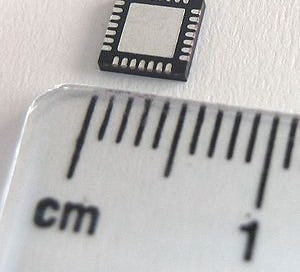DARPA Selects UT For 3D Packaging R&D Center
DARPA has awarded $840 million to the Texas Institute for Electronics to establish a facility that supports 3D heterogeneous integration R&D and low-volume production.
By Mark LaPedus
The Defense Advanced Research Projects Agency (DARPA) has awarded $840 million to the Texas Institute for Electronics (TIE) at The University of Texas at Austin to establish a facility that supports 3D heterogeneous integration R&D and low-volume production.
Under the agreement, TIE will establish a national open-access R&D and prototyping fabrication facility. The U.S. Department of Defense (DoD) will also have access to the facility, enabling the defense community to develop products for use in radar, satellite imaging, unmanned aerial vehicles and other systems.
DARPA’s initiative is called the Next-Generation Microelectronics Manufacturing (NGMM) program. NGMM will target over-the-horizon advances in 3D heterogeneous integration. DARPA, the R&D agency for the DoD, refers to this technology as 3DHI.
NGMM is funded by the DoD, rather than the CHIPS and Science Act of 2022. The CHIPS Act, which is separate, is a program that is targeted to expand semiconductor and packaging production to the U.S.
Nonetheless, heterogeneous integration is an advanced form of IC packaging. Packaging is an age-old technology that is becoming a more important part of the semiconductor industry. A package is a product that encapsulates a chip, protecting it from harsh operating conditions. It also boosts the performance of the device.
A 28-pin quad-flat no-leads (QFN) package. The package is upside down to show contacts and thermal/ground pad. Source: Wikipedia
In heterogeneous integration, a packaging company assembles different chips and/or components into a high-end package. In effect, the package becomes an electronic system with improved performance and functionality. Some refer to this as a system-in-package (SiP).
Chiplets are also a hot technology in the packaging world. In many respects, chiplets are form of heterogeneous integration. Today’s AI chips, processors and other high-performance products are fast and highly-integrated devices. These chips are also relatively large and are sometimes difficult and expensive to manufacture in the fab.
So, some are embracing the chiplets concept. In chiplets, the idea is to break up a large device into smaller blocks, and then assemble them into an advanced package. The goal is to improve the yields and reduce costs.
3DHI program
Over the years, the DoD has been involved and funded a multitude of projects in the semiconductor industry. Packaging is a critical technology for the DoD.
In 2020, the DoD awarded Intel the second phase of its State-of-the-Art Heterogeneous Integration Prototype (SHIP) program. The program involves heterogeneous integration packaging.
At the time, Qorvo also won an award from the DoD in the SHIP program. As part of the plan, Qorvo set up an RF production and prototyping center.
In 2023, the Semiconductor Research Corp. (SRC), a consortium of industrial partners in cooperation with DARPA, announced the creation of a $32.7 million Center for Heterogeneous Integration of Micro Electronic Systems (CHIMES). This center is located at Pennsylvania State University.
ln 2022, DARPA launched the NGMM program and opened the bidding process to find a partner. The goal of the program is to establish a domestic center for 3DHI R&D and manufacturing.
“In this solicitation, 3DHI refers to the stacking of separately manufactured components from different material systems, within a single package, to produce a microsystem that provides revolutionary improvements in functionality and performance,” according to DARPA, in documents that originally announced the program.
Several companies are working on various forms of this technology, but there is a gap in the U.S. “Presently, the U.S. has no open-access manufacturing center with a comprehensive capacity for 3DHI research and development,” according to DAPRA in the documents. “With very few exceptions, U.S. companies engaged in 3DHI research rely upon off-shore facilities, e.g., TSMC (Taiwan) and Interuniversity Microelectronics Center (IMEC, Belgium). An open-access national manufacturing center for 3DHI R&D would result in a more expansive wave of innovation, would promote shared learning, and would ensure that start-ups, academia, and the defense industrial base could engage in 3DHI R&D for low-volume products.”
In July 2024, DARPA announced the selection of the TIE at The University of Texas at Austin as its partner in the NGMM program. The program is composed of two phases, each 2.5 years in length. In Phase 1, TIE will establish the center’s infrastructure and basic capabilities. In Phase 2, the center will engineer 3DHI prototypes. It will also work with DARPA on separately funded design challenges.
Sponsored by UT, TIE is a public-private partnership of semiconductor vendors, defense electronics companies, national labs and academic institutions. TIE also has a facility with 84,000-square-feet of clean room space.
Founded in 2021, TIE grew out of the Nanomanufacturing Systems Center (NASCENT) at UT Austin, an Engineering Research Center funded by the National Science Foundation (NSF) from 2012 to 2023.
TIE recently received $440 million in funding from the Texas Legislature, complementing a $112 million appropriation to the university in 2021.
Today, TIE’s goal is to create a center in 3DHI technology, pilot fabrication facilities and semiconductor workforce development.
TIE’s NGMM team is composed of 32 defense electronics and semiconductor companies, as well as 18 academic institutions. TIE’s main strategic partners are AMD, Applied Materials, Canon, Intel, Micron, Raytheon and Resonac.
Other NGMM partners are Adeia, Ansys, BAE Systems, Boeing, Cadence, Cerium Labs, Deca, Electroninks, GlobalFoundries, HRL Laboratories, IMEC, Infleqtion, Kepler Computing, Lockheed Martin, Micross, Northrop Grumman, Qorvo, Sandbox Semiconductor, Siemens, Skywater, Synopsys, Teledyne, 3D Glass Solutions, Tower Semiconductor, and Zero ASIC.
The university partners are Austin Community College, Georgia Institute of Technology, Penn State University, Prairie View A&M University, Purdue University, Rice University, Southwest Advanced Prototyping Hub, Texas State University, Texas Tech University, Texas A&M University, University of California Los Angeles, University of California San Diego, UT Arlington, UT Dallas, UT El Paso, University of Houston, University of North Texas, UT Rio Grande Valley, and UT San Antonio.




